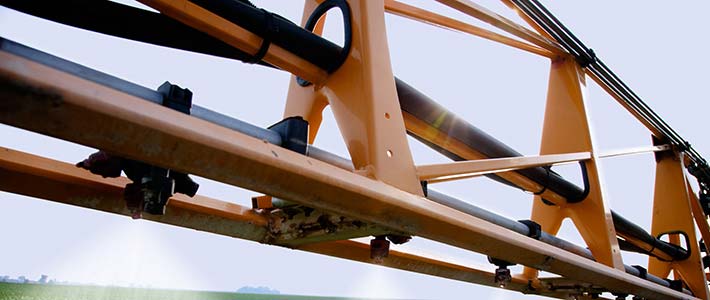As I traveled across much of the state these last two weeks, I saw much of the crop is in decent shape, and the crop is rapidly approaching harvest time. There is a lot of variation across the fields and drown outs were a problem. Since things are winding down, I thought I would mention three things to monitor and consider.
Drown Outs
First, a number of drown outs occurred last week. As I drove, I noticed dead or dying plants, loaded with pods. By the time the field is ready for harvest, the beans in these pods may be heavily molded.
Inclusion of these beans with the rest of the crop may result in a significant price deduction at your local elevator this fall. If you choose to store these beans on farm, they won’t get better and may cause the fungus to infect otherwise healthy beans. As you scout your fields, I recommend you monitor these spots and determine how you will manage these areas at harvest.
Soybean Aphids
Last week, a representative from the Minnesota Department of Agriculture met with the Minnesota Soybean Research and Promotion Council to discuss failure of approval for a Section 18 Emergency Exemption for use of sulfoxaflor (Transform® WG) on soybeans to control soybean aphids.
Ultimately, the MDA felt there was limited evidence proving resistance to pyrethroids insecticides by the soybean aphids. There were several observations indicating resistance had developed, but only one sample that proved pyrethroid resistance existed.
If you have sprayed for soybean aphids and have/had poor control of the aphids, please contact Robert Koch or Bruce Potter immediately. We need better documentation of this problem.
Palmer Amaranth
Palmer amaranth is being touted as the weed that swallowed the south, and is a very difficult weed to control, especially in soybeans. To date, it has not been found in Minnesota, however, we received disturbing news from Iowa.
According to a recent news release by Dr. Paul Hartzler at Iowa State University, Palmer Amaranth seed has been introduced via planting of native seed mixes for conservation plantings. The two most recent counties reporting Palmer infestation are relatively close to the Minnesota border.
The first thing is to properly identify the weed. Dr. Hartzler produced a great video to help with identification. Please take the time to learn more about Palmer Amaranth and help prevent this green beast from becoming a problem in Minnesota.
Tags: palmer amaranth






